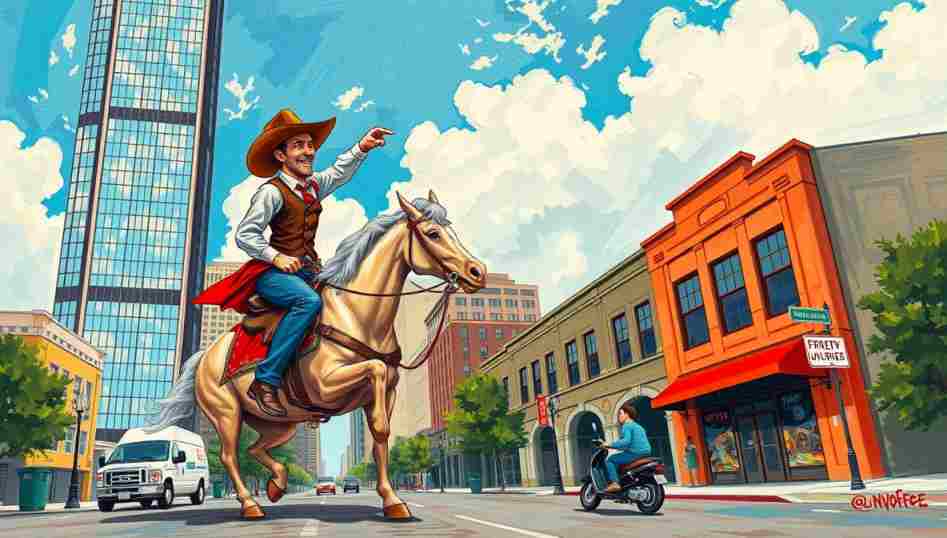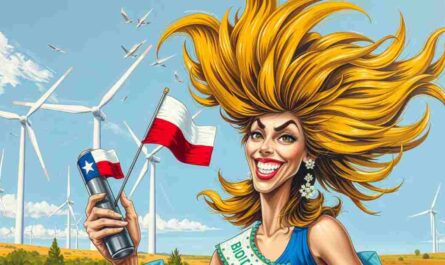America’s Team Strikes Black Gold and Touchdowns
In a revelation that surprises absolutely nobody who has ever watched a Cowboys game or checked the team’s merchandise sales, financial analysts have confirmed that the Dallas Cowboys have essentially become the NFL’s most profitable oil wellexcept instead of pumping crude, they’re pumping merchandise, broadcasting rights, and the tears of disappointed fans who keep believing “this is our year.” The team’s valuation has reached stratospheric heights that would make even Texas oil barons jealous, which is saying something in a state where people name their children after petroleum products.
The Cowboys, owned by Jerry Jones since 1989, have perfected the art of making money regardless of on-field performance, leading economists to wonder if actually winning championships might somehow hurt the business model. “They’ve discovered something remarkable,” explained one sports economist. “You can be mediocre at football and excellent at capitalism simultaneously. It’s the American dream, just not the one fans were hoping for.”
According to recent valuations, the Cowboys are worth approximately $9 billion, making them more valuable than some small countries and several mid-sized oil companies. This despite not winning a Super Bowl since 1996, which in football years is roughly equivalent to the Mesozoic Era. “We’re not just a football team,” Jerry Jones has declared repeatedly. “We’re a brand. An experience. A lifestyle. Also, buy our $200 jerseys.”
The team’s profitability stems from multiple revenue streams that would make a business school professor weep with joy: luxury suites at AT&T Stadium that cost more than most people’s houses, merchandise sales that apparently never stop regardless of the team’s record, and broadcasting deals that treat Cowboys games like they’re the Second Coming even when they’re playing .500 football against the Washington Commanders on a Thursday night nobody asked for.
AT&T Stadium itself, often called “Jerry World” by people who understand branding, cost $1.15 billion to build and features a video screen so large it has its own weather system. The stadium hosts not just football games but concerts, wrestling events, and occasionally serves as a monument to the triumph of spectacle over actual sporting success. According to Forbes’ NFL team valuations, the Cowboys have topped the list for years, proving that you don’t need championships to print moneyyou just need star power, heritage, and fans who refuse to give up hope.
The Cowboys’ business success relies heavily on what economists call “brand loyalty” and what therapists call “an unhealthy attachment to disappointment.” The team’s fanbase, spread across the country like a diaspora of blue-and-silver-wearing believers, continues to purchase merchandise, tickets, and Sunday afternoons’ worth of emotional investment despite decades of playoff underperformance. “It’s remarkable,” noted one marketing expert. “Most brands would suffer from failing to deliver on promises. The Cowboys have turned it into a business model.”
Jerry Jones, the team’s owner and general manager (a dual role that violates the organizational principle of “don’t have one person make all the decisions”), has built an empire on his ability to generate headlines, sign big-name players who may or may not work out, and maintain a media presence that ensures the Cowboys remain “America’s Team” even when they’re losing to teams that shouldn’t be on the same field. His business acumen is undeniable; his football acumen is subject to heated debate in every sports bar in Texas.
The oil well comparison is particularly apt given Texas’s history with petroleum wealth and the Cowboys’ ability to extract value from every possible source. Like oil companies, the Cowboys have diversified revenue streams, maintained pricing power despite market conditions (losing seasons), and convinced consumers that their product is essential to American life. Unlike oil companies, the Cowboys’ product doesn’t actually power vehicles or heat homes, but try telling that to fans who consider Sunday football a religious obligation.
Sports economists point to the Cowboys as a case study in brand management, noting that the team has successfully monetized nostalgia for their 1990s dynasty while simultaneously convincing fans that success is always just one season away. “It’s genius, really,” said one analyst. “They’ve created a perpetual state of hope that generates revenue. The moment they actually win a Super Bowl, they might lose that tension that keeps people engaged.”
The team’s merchandise sales remain astronomical, with Cowboys gear spotted everywhere from Dallas to Antarctica (probably). The star logo has become one of the most recognizable symbols in sports, right up there with the Nike swoosh and the haunted look in Browns fans’ eyes. NFL sponsorship revenue continues to grow league-wide, but the Cowboys command premium rates because advertisers know that Cowboys games, regardless of quality, will draw viewers the way Texas draws oil prospectors.
As the Cowboys continue their dominance of NFL financial rankings while maintaining their dominance of playoff heartbreak, Jerry Jones can take comfort in knowing he built something truly special: a football team that makes money like an oil well, flows like a revenue stream, and drills into fans’ wallets with the precision of a West Texas petroleum engineer. Whether they ever win another Super Bowl is almost beside the pointthe real victory is the billionaire we made along the way.
SOURCE: https://bohiney.com/how-the-dallas-cowboys-became-the-nfls-most-profitable-oil-well/
SOURCE: Bohiney.com (How the Dallas Cowboys Became the NFL’s Most Profitable Oil Well)




